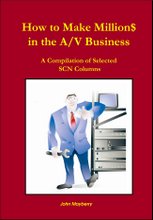
Roy Wallace, who has died aged 80, developed stereophonic sound recording for the Decca company and designed the famous “Decca tree” microphone array which became the standard way across the industry of recording orchestral and operatic sound.
A meticulous man with a mathematical mind, Wallace — Jolly Wally to his friends — was also a bon vivant with an abiding passion for music.
Beginning his career in the days of mono recordings, Wallace’s reputation in the classical music industry enjoyed a late resurgence as 21st-century listeners rediscovered the “hiss” and the “natural” nature of the original recordings, absent in the digital world of CDs.
In the mid-1950s it was Wallace who — in the words of Gramophone magazine — succeeded in convincing the 70-year-old Swiss conductor Ernest Ansermet of the benefits of his experimental recording equipment. Ansermet, whose opinion carried enormous weight, was hugely impressed: “Like standing on the rostrum,” he declared.
For Wallace and for Decca, the maestro’s words marked the moment that the stereo era was born.
Roy Victor George Wallace was born on July 7 1927 in London and was drawn to music from the age of eight, although he never received any formal training.
His first job in 1942 was at Radio and Television Engineering, a firm in Clapham that had started making radar equipment and early electrocardiogram machines on premises shared with the local undertaker. The owner, Lawrence Savage, had been involved, with CJ Francis, in BBC experiments with stereo sound just before the Second World War.
In 1947 Savage explained to Wallace the principle of binaural sound (as he called it) and the pre-war experiments he had made.
The early primitive equipment was overhauled so that twin-track discs could be played using a parallel-tracking pickup arm with two crystal stylus heads which were positioned on a gantry. It had been necessary to use 16-inch discs rotating at 33 1/3 rpm in order to get any reasonable playing time.
Wallace then constructed an experimental artificial head into which were placed three crystal microphones – one central and two angled at 70 degrees left and right.
He next designed and built a three-channel sound mixer (which he called ST1) to get the three inputs into two outputs.
By November 1952 Wallace and Savage were able to demonstrate all their gear to Decca.
The chairman of the Decca record company, Edward Lewis, was impressed by what he heard and gave the go-ahead to continue.
The chairman of the Decca record company, Edward Lewis, was impressed by what he heard and gave the go-ahead to continue.
He realised that stereo sound was the future and Wallace was asked to join Decca and take over the stereo business. Wallace, by now working at West Hampstead, scrapped all the Francis/Savage workings and began again.
Wallace devised a frequency transposition system, with one channel 50H to 9 KHz, another of 12 KHz to 21 KHz with a carrier/pilot frequency right in the middle from 9-10 ½ KHz.
By November 1953 the new system was working so that it was possible to play Beethoven on one channel and to have pianist Winifred Attwell on the other coming through just one pair of lines into the decoder.
By November 1953 the new system was working so that it was possible to play Beethoven on one channel and to have pianist Winifred Attwell on the other coming through just one pair of lines into the decoder.
An experimental session took place on December 23 1953 with the conductor Mantovani and his orchestra.
Three Telefunken M49 microphones (left, right and centre) were bolted to a couple of Dexion uprights in the shape of the capital letter T.
The recordings were cut direct to disc as there was no twin-track stereo tape recorder.
The wax acetates were sent to Decca’s factory at New Malden for processing and eventually Wallace was able to demonstrate what had been achieved. The results were thought remarkable and the stereo image fine.
With no stereo mixing desk available Wallace stripped down a standard Decca six-channel mono machine, redesigning and making a stereo mixer with two banks of three inputs. He then built two new power amplifiers in a matter of weeks.
An Ampex 350 series 1 twin-track tape machine arrived late in April and a further experimental session was undertaken to make sure everything worked.
The equipment was taken to Geneva and on May 13 1954 Ansermet recorded Rimsky-Korsakov’s oriental suite Antar with L’Orchestre de la Suisse Romande.
When the recording of the first movement was complete the conductor remarked how thrilled he was with the sound.
Two months later Wallace flew to Basle with James Brown, collected the ST2 mixer and other equipment and set up the stereo gear in Rome.
Three operas, Manon Lescaut, Otello and La traviata, all with Renata Tebaldi, were recorded experimentally.
After sessions in Paris, Geneva and Belgrade, Wallace returned to London to work on two new mixers.
In July and August 1955 Decca recorded Wagner’s Ring plus Der fliegende Holländer under Josef Keilberth at the Bayreuth Festival.
By using six microphones – three for the orchestra and three for the singers, suspended from the lighting bridge about 20 feet above the stage – the sound was fed into the six-channel ST2 mixer.
However, no artists’ contracts were issued and the tapes languished in Decca’s library for more than half a century until Testament began releasing them on CD last year.
Wallace received his 25 years’ service award in 1978 but retired from Decca at the time of the PolyGram takeover in 1980. Roy Wallace married, in 1957, Joyce Irene Pearce, who predeceased him . He is survived by their two daughters.


